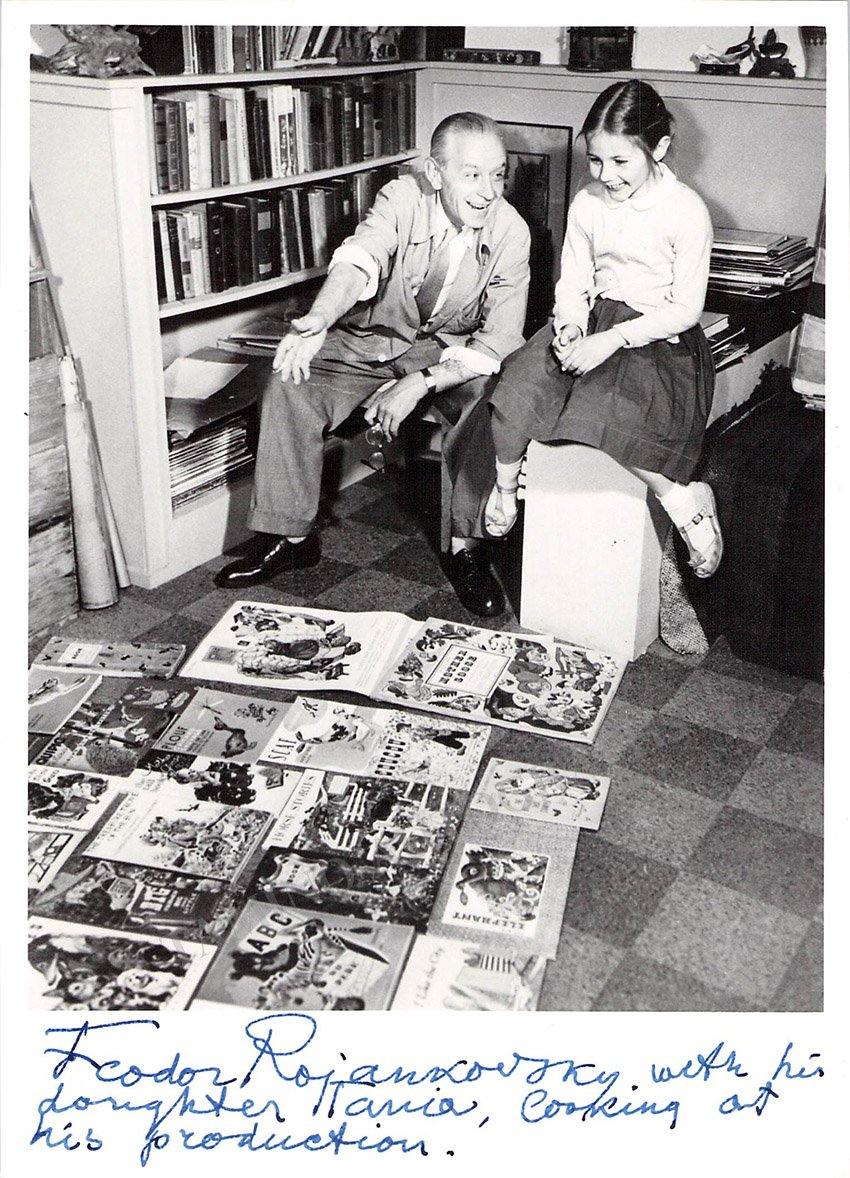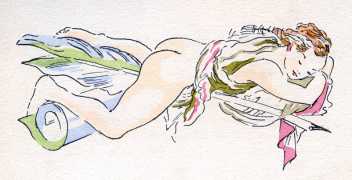
Feodor Stepanovich Rojankovsky (1891-1970), also known as Rojan, was a Russian émigré illustrator. He is best known both for his children’s book illustration but also for his erotic art from the 1930s. Rojan was born in Mitava, in the Kurland Governorate of the Russian Empire (now Latvia) in 1891. After his father’s death in 1897, the family moved to St. Petersburg to be closer to an older married sister. The artist later recalled how he once was taken to the zoo and that then, his imagination excited, he was given a set of coloured crayons with which he immediately began to draw the animals he’d seen. As a result, the boy’s interest in natural history picture books and illustrated classics developed whilst he honed his artistic skills by copying his elder brothers’ school drawings and paintings. These interests led to him to enrol for two years at the Moscow School of Painting, Sculpture and Architecture. However, these studies were interrupted by military service during the First World War, but his first works (patriotic battle scenes) were published in a magazine in May 1915.

After the war, Rojan joined siblings in Ukraine where he worked as an artist for the local council, illustrating school books. Further military service followed during the Russian Civil War and he became a prisoner of war in Poland. After the war, the artist stayed in Poland designing book covers and illustrations for the bookseller and publisher Rudolf Wegner. Unable to return to USSR after his service with the anti-communist White Army, Rojan moved to France in 1925, where he found work again as an illustrator of children’s books.

In Paris, Rojan supplemented his income by designing plates for a considerable amount of erotica. Allen and Polly Irving’s biography of the artist describes these “naughty books [as] a minor but noteworthy aspect of the illustrator’s long and varied career [which] round out the picture of a man in and of his time and place. The drawings are best viewed in the cultural setting of Paris in the 1930s and, in the much harsher world of today, appreciated for their gentle period style and what they reveal of our social and cultural history…. This small and generally amusing body of work has long been known, valued, and collected; Rojankovsky lavished his best draughtsmanship and colour work on these illustrations and they are among his most accomplished work” (from Feodor Rojankovsky: The Children’s Books and Other Illustration Art, 2013). Rojan was an incredibly productive designer and his illustrations are “distinctive, brightly-coloured, spirited and stylish,” generally painted in watercolours.

Rojan is noted for the portfolio Idylle Printaniere of 1936 which consists of 30 lithographs wordlessly telling the story of the chance meeting of a man and a woman on a train and thence to a hotel room. His work on titles by Pierre Lous included 105 plates for the Manuel de civilité pour les petites filles (The Young Girl’s Handbook of Good Manners, 1926), Pybrac (1927), 75 illustrations for the Poèsies erotiques (1937) and, lastly, Trois filles de leur mère (1940). He also worked on titles including Jeux d’Enfants (1930), Memoires of Casanova (1931), Théophile Gautier’s Poésies libertines (1935), Raymond Radiguet’s Vers libre (1937), Vicomtesse de Saint Luc’s Liqueurs féminines, parfums sexuels (1940) and Jean Spaddy, Dévergondages (Wantonness, 1948). Rojan also designed illustrations for Le petit chaperon rouge (Little Red Riding Hood) and for Guillaume Apollinaire’s Cortège priapique, which were unpublished. His attractive and light-hearted style was plainly well-suited to children’s books, so it can be quite strange to see it applied to very explicit adult scenes, which frequently involve a wide diversity of couples engaged in a range of practices.

In 1941, Rojan moved to the US to work there with his former French publisher. He was able to continue his career illustrating large number of children’s’ books featuring either history or animals and the natural world. He wrote and illustrated seventeen books of his own and provided plates for four dozen books by authors including Rudyard Kipling, Rose Fyleman and Algernon Blackwood.

After leaving Paris, Rojan produced no more erotic work- perhaps understandably given that his name was now associated by the public with titles such as Our Puppy, by Elsa Ruth Nast (1948), Baby Wild Animals, John Wallace Purcell (1958) and The White Bunny and His Magic Nose, Lily Duplaix (1957). For more information on Pierre Louys see my bibliography for the author and for details of interwar book illustrations, see my books page.

[…] them to more familiar stories and settings. For example, in 1930 the Paris-based Russian artist Rojan (Feodor Stepanovich Rojankovsky-1891-1970) produced a series of illustrations of an adult […]
LikeLike
[…] pen and ink drawings. Six years later, he tackled Pierre Louys’ Poésies érotiques. Much like Rojan’s version of the previous year, Vertès provided thirty-two pencil and watercolour plates that […]
LikeLike
[…] featured a woodcut on the titlepage by Leonard Foujita and internal full page plates by (it seems) Rojan. These were close illustrations of the activities described in the quatrains and not really […]
LikeLike
[…] Rojan, illustrations for the Handbook, 1926 […]
LikeLike
[…] the junior and educational materials (rather like the artist Rojan), Yunge-Bateman also worked on some rather more adult texts, including various works by […]
LikeLike
[…] the range of unconventional sexual tastes described in the text. In 1937, the Russian illustrator Rojan provided seventy-three explicit illustrations for a further edition of the poems, which combined […]
LikeLike
[…] a few months the publisher released an illustrated edition containing six etchings by Louys-regular Rojan. Strangely, the next year Simon Kra reissued the same text, but this time featuring twelve coloured […]
LikeLike
[…] the family in their best ‘New Look’ dresses). Then, in 1960, an edition illustrated by Rojan was published. Finally, as I have mentioned several times, a version illustrated by graphic novel […]
LikeLike
[…] but who also worked on texts by Louys- includes Pierre Lissac, both Pierre and Maurice Leroy, Rojan, Maurice Julhès, Pierre Rousseau and Renée Ringel. Although there was an obvious gulf between […]
LikeLike